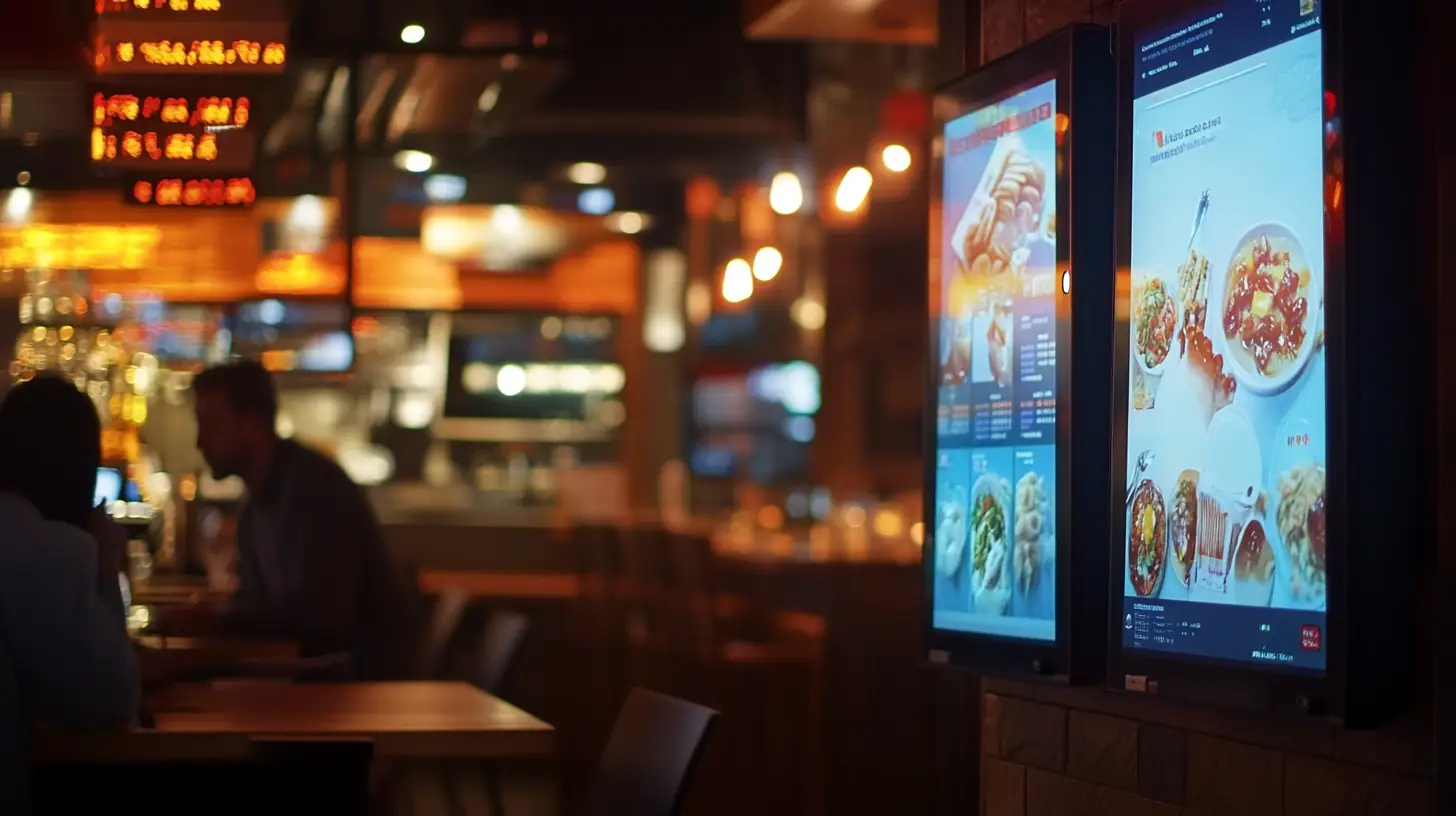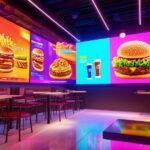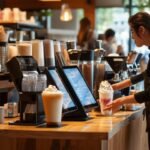Boost your restaurant’s efficiency with interactive kiosks for ordering. You’ll witness a boost in revenue through strategic upselling and targeted promotions while minimizing order errors and reducing wait times. With enhanced customer experiences and improved satisfaction, you’ll drive higher customer retention. Interactive kiosks are a cost-effective solution that cuts labor costs and enhances operational efficiency. The added benefit of scalable technology guarantees future growth potential. Utilizing interactive kiosks positions your restaurant for enduring success, making peak times manageable and providing seamless dining experiences. Learn about how these kiosks can transform your business operations and surpass customer expectations.
Key Takeaways
- Interactive kiosks increase revenue by implementing strategic upselling and targeted promotions.
- They reduce wait times and improve customer satisfaction, especially during peak hours.
- Kiosks enhance order accuracy through customer-selected entries and visual menus.
- This technology offers cost-effective solutions by reducing labor costs and improving operational efficiency.
- The growing adoption of self-ordering kiosks is driven by their ability to provide seamless dining experiences and increase check sizes.
Benefits of Interactive Kiosks
Interactive kiosks can greatly enhance restaurant operations by increasing revenue, reducing wait times, and minimizing order errors. By integrating self-ordering kiosks, you can directly impact your bottom line. These systems can increase sales by up to 30% through strategic upselling and promoting high-margin items. This isn’t just speculation; it’s backed by data showing significant revenue boosts in establishments that use these kiosks.
Customers appreciate the efficiency that self-ordering kiosks bring. In fact, 75% of them prefer using kiosks over waiting in long cashier lines. This preference leads to decreased wait times and an improved customer experience. By adopting this technology, you’re catering to what your customers want, thereby enhancing their overall satisfaction.
Kiosks reduce human errors in taking orders. Clear and accurate order details are transmitted directly to your kitchen staff, ensuring that meals are prepared correctly. This precision enhances operational efficiency and contributes to a better dining experience.
Implementing self-ordering kiosks can also reduce labor costs by over 85%, making it a cost-effective solution. These kiosks offer personalized recommendations and promotions, which not only improve customer engagement but also foster loyalty, turning first-time visitors into repeat customers.
Increased Check Sizes
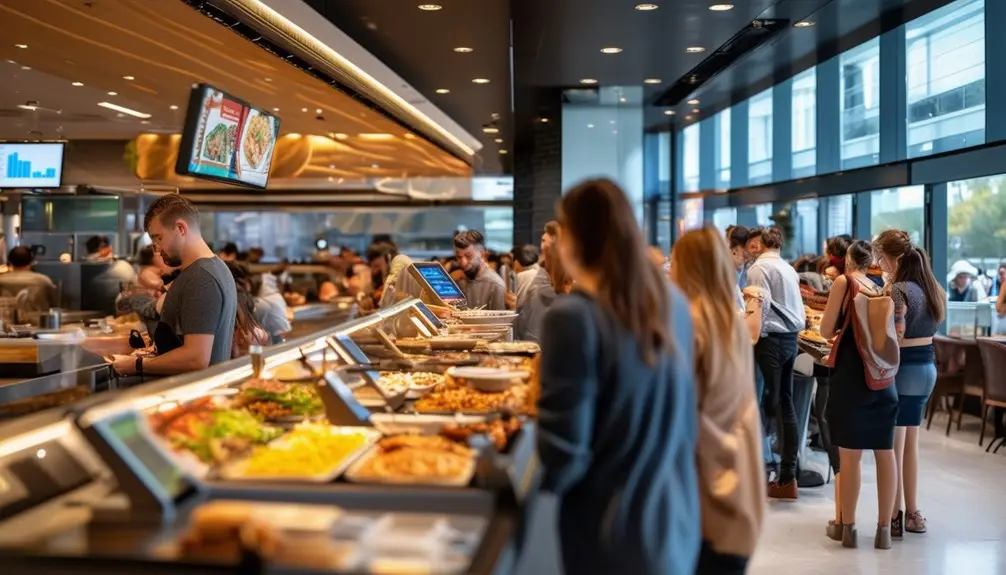
Self-ordering kiosks have proven to improve check sizes through strategic upselling and targeted promotions. By implementing these advanced systems, you’re not just streamlining the ordering process; you’re also creating opportunities to increase your sales. For example, Taco Bell experienced a 20% revenue boost from digital orders, showing the effectiveness of kiosks in driving higher sales.
When customers use kiosks, they’re more likely to respond to upsell prompts. McDonald’s reported a 30% increase in average check size after adopting kiosks, mainly due to these targeted upsell suggestions. This means customers are more inclined to add extra items, such as drinks or desserts, that they might have skipped in a traditional ordering scenario. Indeed, 20% of customers added drinks to their orders when prompted by kiosks, significantly boosting revenue.
Self-ordering kiosks are designed to promote high-margin items, further enhancing your revenue potential. By highlighting these items, you can strategically guide customers toward choices that contribute to higher sales. Essentially, leveraging the capabilities of self-ordering kiosks allows you to optimize each transaction, leading to a noticeable increase in your average check size.
Decreased Wait Times
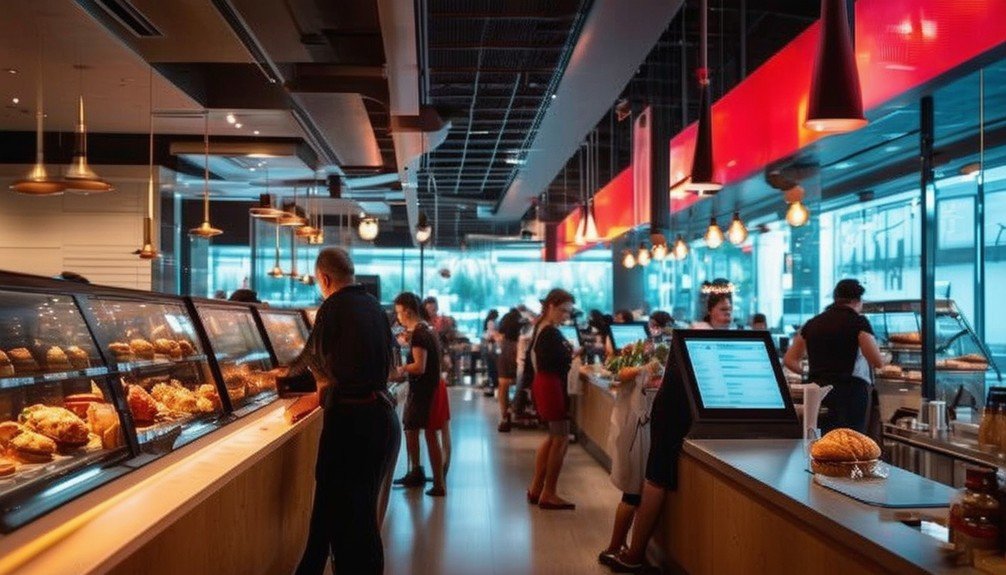
By opting for kiosks, 75% of customers effectively reduce their wait times, leading to faster service and greater satisfaction. Self-ordering kiosks streamline the ordering process, ensuring you spend less time in line and more time enjoying your meal. This efficiency is not just a convenience—it’s backed by data. Studies show that 91% of customers prefer kiosks over cashiers when lines exceed ten people, highlighting the kiosks’ role in reducing wait times.
When you choose to use a kiosk, you directly contribute to:
- Reduced Wait Times: Faster service means you get your food quicker.
- Improved Customer Satisfaction: Happy customers are more likely to return.
- Efficient Dining Experience: Spend less time waiting and more time dining.
- Higher Retention and Loyalty: Satisfied customers are loyal customers.
Self-ordering kiosks don’t just reduce wait times; they also enhance your overall dining experience. By integrating this technology, restaurants can handle peak times more effectively, leading to higher customer retention and loyalty. So, next time you’re faced with a long line, consider using a self-ordering kiosk to improve your dining experience.
Improved Order Accuracy
While reduced wait times are a vital advantage, kiosks also excel at increasing order accuracy through customer-selected entries and visual menus. By allowing customers to input their own orders, self-ordering kiosks significantly reduce errors that commonly result from verbal miscommunication. Data indicates that clear and precise visual menus provide an intuitive interface, making it easier for customers to select precisely what they want without any ambiguity.
When you use a self-ordering kiosk, you directly input your choices, minimizing mistakes that can occur when orders are relayed verbally to staff. This direct interaction not only improves order accuracy but also streamlines the kitchen process. Accurate, clear orders mean chefs spend less time deciphering requests and more time on food preparation, reducing kitchen time and minimizing voids and discounts due to incorrect orders.
Enhanced order accuracy is essential, particularly in fast-paced environments where there’s limited customer interaction. By improving order accuracy, self-ordering kiosks enhance customer satisfaction and guarantee you get what you ordered, exactly how you wanted it. This reliable and efficient system benefits both you and the restaurant, creating a seamless dining experience.
Cost-Effective Solution
By incorporating self-ordering kiosks, you can reduce labor costs by over 85%, directly impacting your bottom line. These kiosks not only facilitate upselling and drive revenue growth but also offer long-term savings through reduced operational expenses. Leveraging this technology guarantees a more profitable and efficient operation for your restaurant.
Labor Cost Reduction
Self-ordering kiosks can drastically cut labor costs, providing restaurants with a cost-effective solution that enhances operational efficiency. Implementing a self-ordering kiosk system can reduce labor costs by over 85%, making it a strategic investment. By streamlining the ordering process, these kiosks require fewer workers during peak hours, leading to notable labor savings. With flexible staffing options, you can maintain operational efficiency without overstaffing.
Here are four key benefits of deploying a restaurant kiosk system:
- Reduced Labor Costs: Self-ordering kiosks lower the need for front-of-house staff, resulting in significant savings.
- Increased Efficiency: By automating the ordering process, kiosks minimize human error and speed up service, ensuring a seamless customer experience.
- Flexible Staffing: The reduced need for order-taking staff allows you to reassign employees to more productive tasks like food preparation or customer service.
- High ROI: The long-term savings from reduced labor costs offset the initial investment, providing a substantial return on investment.
Upselling and Revenue Growth
Implementing self-ordering kiosks can greatly enhance your restaurant’s revenue by effectively promoting high-margin items and facilitating strategic upselling. Data shows that kiosks can increase average check sizes by 20%-30%. For example, Taco Bell saw a 20% revenue increase from digital orders after deploying kiosks. Similarly, McDonald’s reported a 30% increase in average check size with their self-ordering kiosks.
One key advantage is the ability to upsell. Kiosks can suggest complementary items or upgrades at the point of sale, which might be overlooked by busy staff. For instance, 20% of customers added drinks they initially skipped when ordering through kiosks. This targeted upselling significantly enhances revenue.
Kiosks can highlight high-margin items more effectively than traditional menus. By displaying enticing images and descriptions, customers are more likely to opt for premium choices. The automated nature of kiosks guarantees consistency in upselling efforts, maximizing your revenue potential.
Long-Term Savings
Integrating self-ordering kiosks into your restaurant can reduce labor costs and enhance operational efficiency. By automating the ordering process, you can reallocate staff to more productive tasks, resulting in significant long-term savings. The initial investment in these kiosks is offset by the subsequent decrease in labor expenses and the increase in average ticket size through strategic upselling.
A self-ordering kiosk, when integrated with your Point Of Sale System, offers numerous advantages:
- Reduced Labor Costs: Fewer employees are required during peak hours, allowing you to maintain a leaner, more cost-effective workforce.
- Increased Revenue: Kiosks can suggest add-ons and upsell items, boosting the average ticket size and enhancing overall profitability.
- Operational Efficiency: Automating orders minimizes human error, speeds up the service, and improves customer satisfaction.
- Scalability: Kiosks offer flexible staffing options, making it easier to manage varying levels of customer demand without increasing labor costs.
Future of Self-Ordering Kiosks
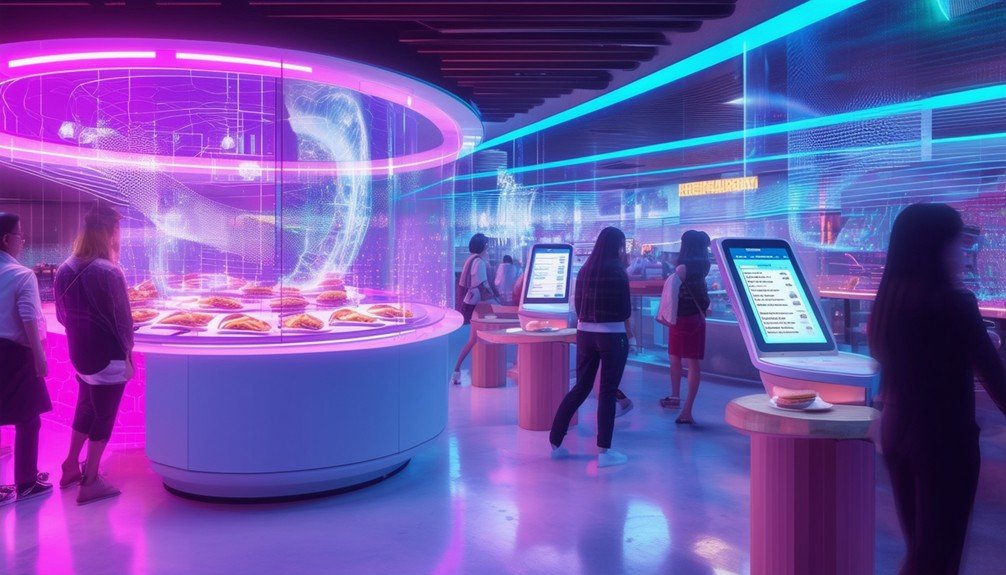
As restaurants increasingly adopt self-ordering kiosks, customers can expect more seamless and efficient dining experiences driven by these advanced technologies. The future of restaurants is leaning heavily towards self-serve kiosks due to their ability to enhance customer satisfaction. Post-pandemic, there’s been a notable uptick in the demand for these systems, as they not only reduce wait times but also tend to increase average check sizes by encouraging upselling and customization.
Implementing self-ordering kiosks does require a substantial upfront investment. However, the long-term benefits, such as operational efficiency and labor cost reduction, make it a worthwhile expenditure. Data indicates that restaurants utilizing kiosks are witnessing significant growth in customer engagement and satisfaction. The trend is clear: more establishments are expected to integrate these technologies to stay competitive.
Looking forward, the usage of self-ordering kiosks in restaurants is projected to grow significantly. This growth is fueled by technological advancements and shifting consumer preferences towards contactless and fast service options. As the industry evolves, staying ahead with these innovations will not just be advantageous, but essential for catering to the modern diner’s expectations.
Conclusion
You’ve got to immerse yourself in interactive kiosks in your restaurant! They don’t just increase check sizes—they skyrocket them. Say goodbye to long wait times; these kiosks slash them to almost zero. Order accuracy? It’s practically flawless. Plus, they’re a cost-effective solution that’ll make your accountant smile. The future? It’s all about self-ordering kiosks, a game-changer you can’t afford to ignore. Engage now, and watch your restaurant thrive like never before!
Frequently Asked Questions
What Is a Self-Order Kiosk in a Restaurant?
Did you know McDonald’s saw a 30% increase in sales with self-order kiosks? These touch-screen devices let you place orders, reducing wait times and errors, while offering personalized recommendations to enhance your dining experience.
What Impact Will Kiosks Have on Ordering in the Restaurant Industry?
You’ll see increased revenue, as kiosks boost average check sizes by 20%-30%. Customers will appreciate reduced wait times and improved order accuracy, leading to higher satisfaction. Post-pandemic, kiosks will further enhance customer experience and operational efficiency.

